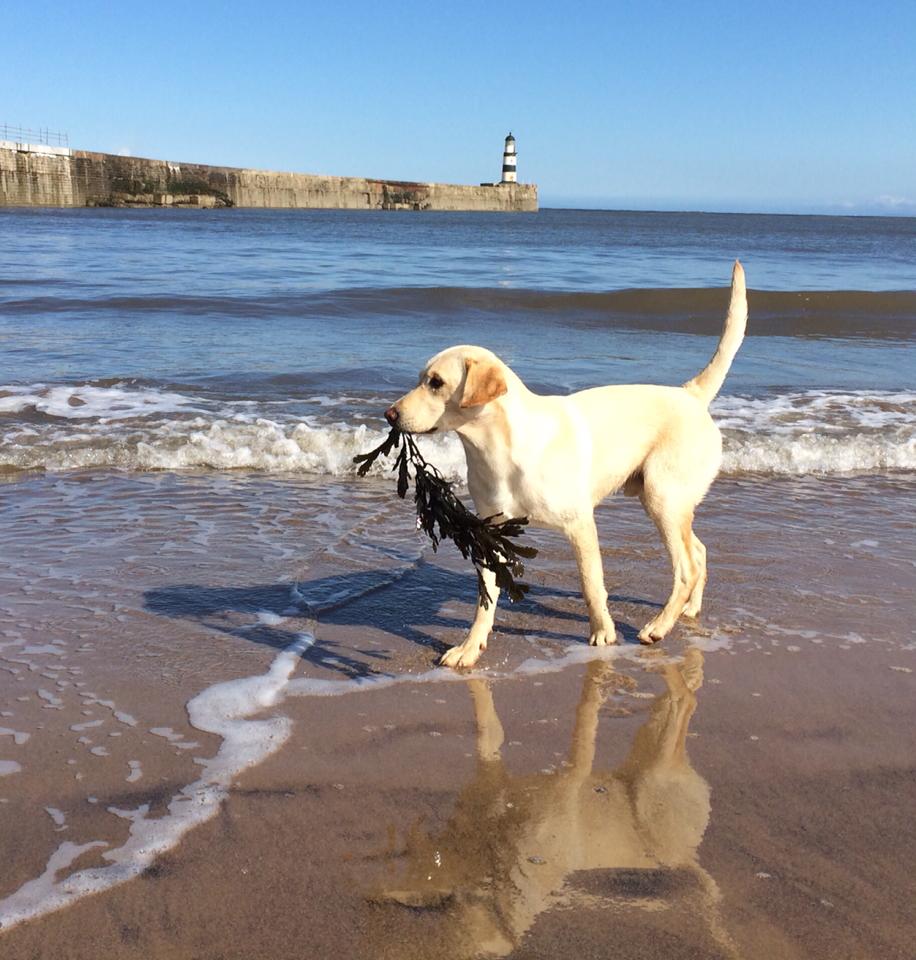A Brief History of Gundogs
28/01/2017
Once upon a time (as all good stories start), Man discovered that dogs could be trained to locate and chase prey, making them the ideal hunting companion (the seaweed doesn’t count, but Oscar was a puppy at the time!).
It was the start of a beautiful relationship. It is from these dogs that terriers, hounds, gundogs and other breeds of hunting dog are all descended, making them the oldest and original canine companions out of all dog categories.
As time progressed and people became less nomadic, they began farming livestock, which meant that hunting for day-to-day survival became less of a necessity. Instead, hunting became more of a sport. As different types of hunting evolved depending on landscape and prey, people required dogs with varying skills and so breeding to accentuate these skills began. For example, wetland hunting required dogs with water resistant coats, an excellent nose and the stamina to spend long periods of time in water. Deer hunting required speed, stamina and strength combined with patience and obedience. Game that needed to be flushed from hiding places out in the open fells required a dog with high energy levels to cover large amounts of ground at speed. Prey that was underground required smaller, ferocious dogs that could fit down tunnels and burrows.
In the case of gundogs, four sub-categories of gundog have emerged from breeding over time. As Pippa Mattinson explains on her site Totally Gundogs these are:
Retrievers – soley retrieve and must be able to sit and ignore all distractions until given the command to retrieve by their owner or handler.
Spaniels – bred to hunt and flush game, reflected in high energy.
Setters and Pointers – bred to find scarce game and then freeze, ‘pointing’ in the direction of the game. They don’t need to retrieve.
HPR or Versatile Gundogs – bred to hunt, point and retrieve; a versatile, multi-tasking dog and increasingly popular.
Big estates that had their own hunt would have estate kennels where hounds would be kept for fox hunting. For game shoots, the gamekeeper would likely be in charge of looking after the dogs, their breeding, health, training etc and would keep the right kind of gundogs for the landscape of the estate. In Gilbertson & Page’s early years, they primarily dealt with gamekeepers, who handled the procurement of feeds for game and dogs alike.
You may be wondering if it’s possible to train a retriever to flush or point, or perhaps a pointer to retrieve? Pippa Mattinson certainly thinks so, and as one of the foremost experts on dog training, in particular with gundogs, she would know. HPRs, which are capable of doing all of those things, are big dogs with lots of energy that require careful handling. If you feel unequal to that daunting task, it may be possible to get a retriever, which tend to be steadier more docile dogs, and train it to do the extra tasks you require it to do. Similarly it is possible to train a Spaniel to retrieve once it has flushed out game and it has been shot.
Pippa also points out that gundogs which have been bred for showing rather than sport are also an option for those who admire the gundog breeds, but don’t intend to do any hunting. They have often been bred for characteristic appearance and have lost some of their hunting instinct in the process. Again, when considering any dog breed, it is most important to talk to a reputable breeder about the breed and whether it is suitable for you. A good breeder will want a successful pairing and will not encourage you to buy a puppy that is not suited to your lifestyle. Local breed clubs will also be able to point you in the direction of a breeder who is either breeding gundogs for their sporting characteristics or for their appearance.
It is no wonder that gundogs are so popular, even with those who don’t intend to hunt in any shape or form. As a class of dog they are generally highly intelligent, respond well to training when it is undertaken correctly, make great family pets in the right circumstances and are receptive and intuitive companions.



